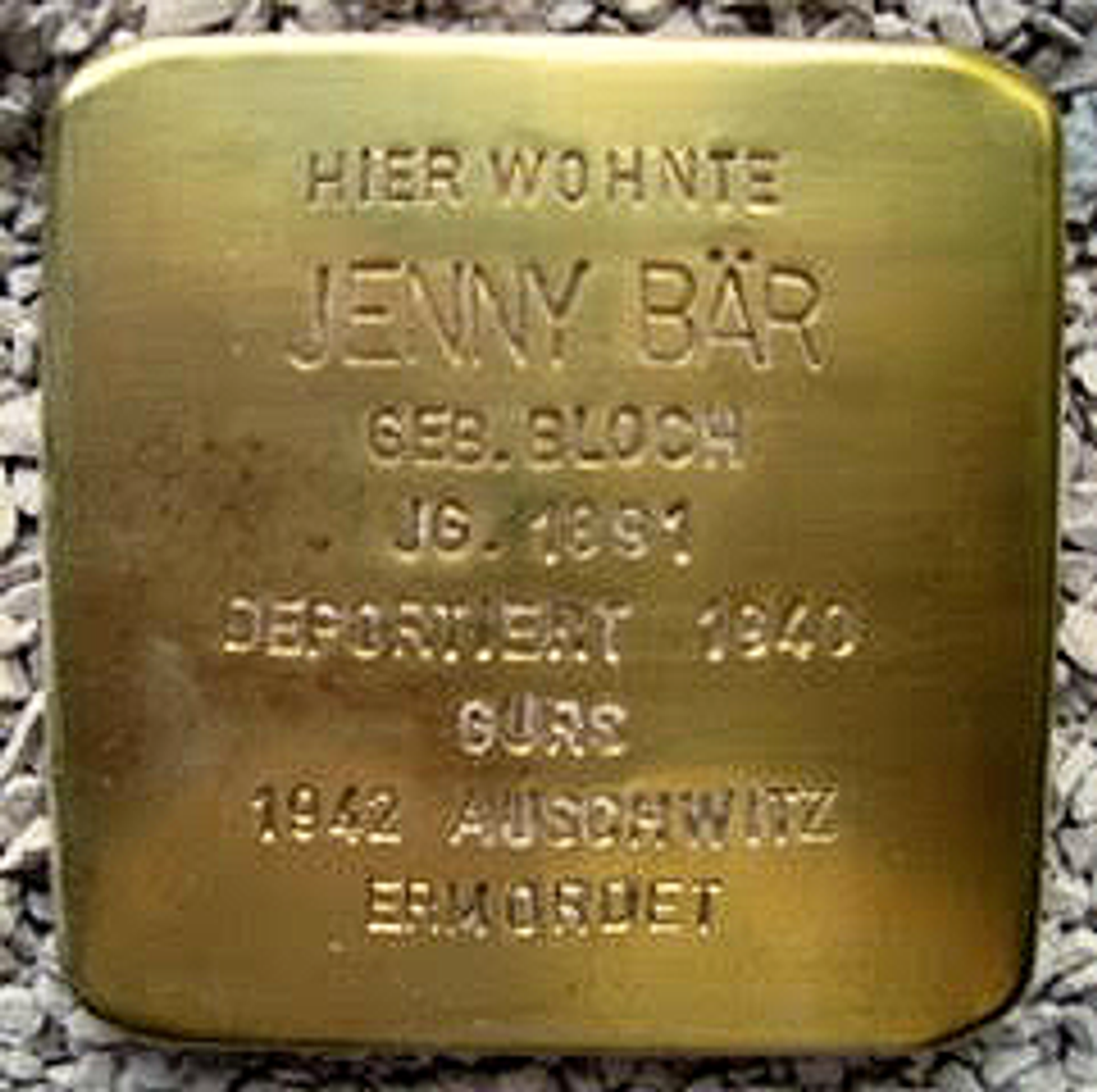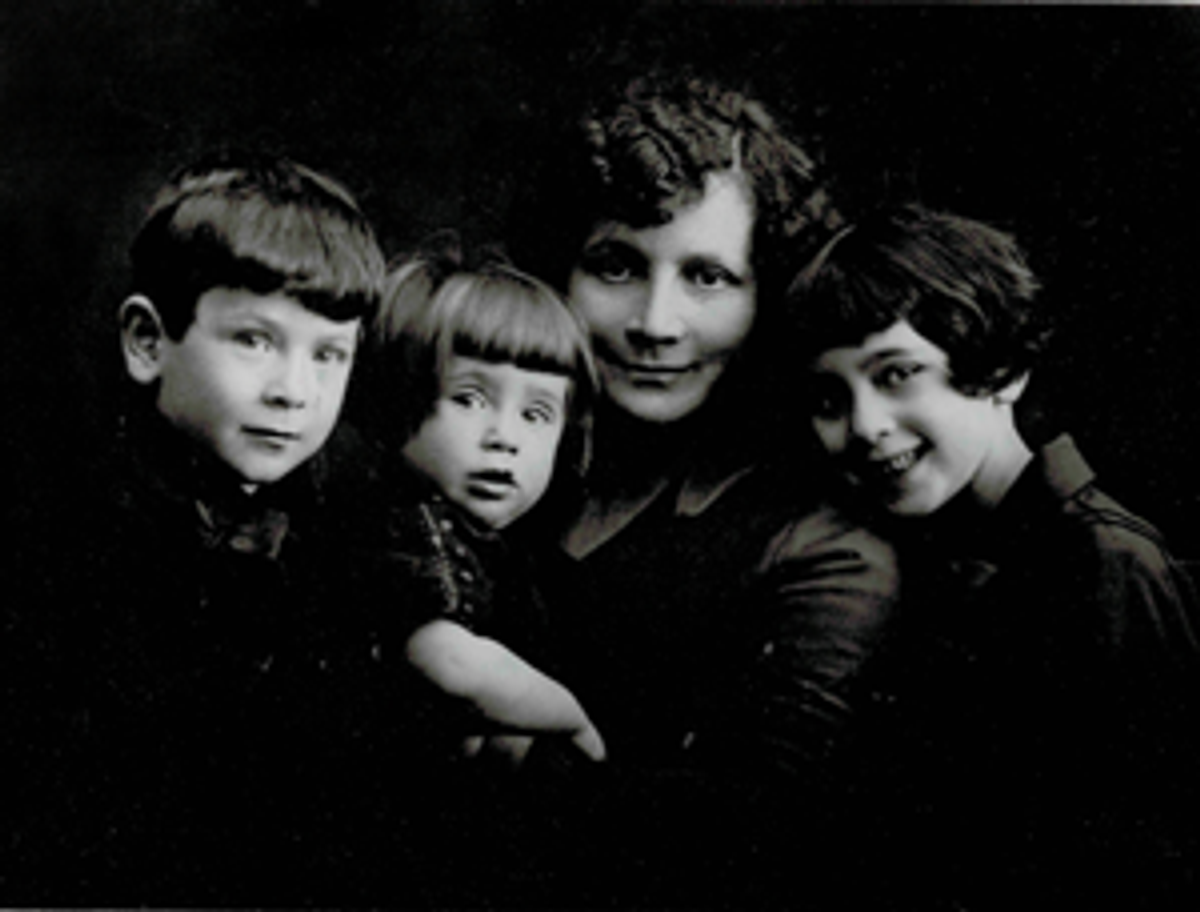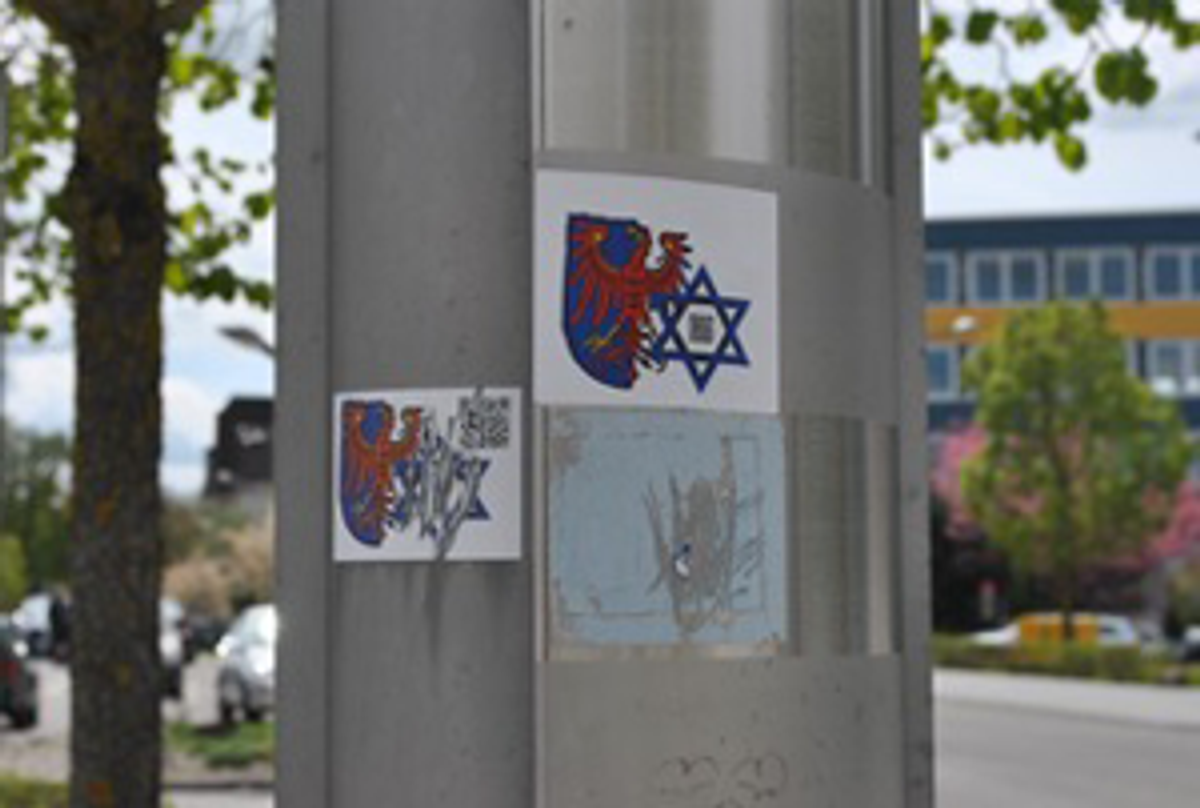
If you have recently traveled to a German city such as Berlin, Hamburg, or Freiburg you may have stumbled across a small brass marker laid into the sidewalk. This Stolperstein, or “stumbling stone,” is the creation of artist Gunter Demnig, who designed the cobblestone-sized memorials to commemorate individuals murdered under Germany’s National-Socialist regime. Each Stolperstein displays the name, birth year, and fate of an individual victim, including the dates of deportation and death, if these are known.
The Stolpersteine project, which began in the early 1990s, has flourished across Europe, with over 40,000 memorials laid not only for Jewish victims, but also for Sinti, Roma, homosexuals, Jehovah’s Witnesses, the disabled, and others. These histories are typically researched by local individuals, often as part of school projects, and each stone is laid by the artist himself at a small ceremony, sometimes attended by surviving relatives. Each stone costs 120 Euros, with all of the costs borne by private donors.
The Stolpersteine are quite distinct from large, centralized monuments such as the Memorial to the Murdered Jews of Europe, which stands next to Berlin’s Brandenburg gate. The stones are designed to be part of everyday life and to mark the memory of an individual in the place where he or she lived. But while this individualized form of Holocaust memorial has become very prevalent in Germany, it is not universally accepted.
In Villingen, a German city of about 80,000 located in the Black Forest region, the Stolpersteine created for the 19 Jewish Villingen residents persecuted during the Holocaust are currently not installed in the city streets, but instead are sheltered in the basement of Friedrich Engelke, a retired math professor, and his wife Gabriele, an English teacher.
The town council of Villingen has twice voted to refuse permission to allow these privately funded memorials on public property. The Engelkes and other community members have founded an organization dedicated to placing these memorials where they are designed to go. This pro-Stolpersteine group organizes frequent vigils to keep the fight for the Stolpersteine alive.
I had the opportunity to view these displaced Stolpersteine and hear about the controversy surrounding them after attending an evening vigil outside the Villingen city hall this past December. That evening around 50 of us had stood holding lit candles, bundled against the cold as Professor Engelke spoke movingly of two victims from the Nazi era, young residents euthanized because they were disabled, and of the painful memories of their surviving family members. As the Engelkes explained to me the background of the controversy it became clear that the task of the pro-Stolpersteiners has moved beyond simply lobbying for these memorials and has become an attempt to get the community to confront and understand its Holocaust-era history fully and honestly.
Certainly my first impression of Villingen several years ago was of a town that seemed eager to celebrate its history. The town’s medieval towers are well preserved and carefully identified; numerous public markers celebrate local leaders and traditions, especially Fasnet, a pre-Lenten carnival that dates back centuries. History seemed alive, and cherished, at every turn.

It is, however, precisely the possibility of people encountering the history of Villingen’s Jews at every turn—“auf Schritt und Tritt”—that has led some civic leaders to reject the Stolpersteine, first in 2004 and then again at the end of 2013. Prominent local politician Renate Breuning, who belongs to the Christian Democratic Union (CDU), the party of Chancellor Angela Merkel, carefully explained her opposition to the Stolpersteine in the local paper, the Südkurier, in 2004. Breuning expressed concern that marking the sidewalk in front of specific homes might give the impression that their current owners benefited financially from the Third Reich’s theft of Jewish property. Noting that there were already memorials to Villingen Jews, Breuning further argued that it was time to stop creating new memorials and to allow Germans to go about their day-to-day existence without having to confront the past.
A decade later Breuning appears fed up with the controversy, and her careful discourse has devolved into vulgarity. According to the respected German daily, the Frankfurter Allgemeine Zeitung, soon after the 2013 vote Breuning responded to a reporter’s query about the Stolpersteine with a crude sexualized expression, asserting that the controversy was of no concern to anyone outside the local community.
One local politician, however, is still willing to speak out about his opposition. Town council member Jürgen Schützinger represents the Deutschen Liga für Volk and Heimat (German League for Volk and Homeland), an offshoot of the far-right National Democratic Party, most aptly described as a neo-Nazi group. Schützinger, who garnered 2,000 votes to win his council seat, spoke to a reporter for the German weekly, Kontext. Blasting the Stolpersteine as a moneymaking scheme for their creator, Schützinger proclaimed that the Stolpersteine memorials harken back to a time that is now passed and that Villingen’s emphasis should be on its future.
Yet the town’s orientation toward the future is quite selective. Preparations have long been under way for Villingen’s 1,200-year Jubilee in 2017, and remembrances of some aspects of the more recent past figure prominently in Villingen’s public space. Near one of the city’s celebrated medieval towers—the Kaiserturm—you can find a large sculpture in the shape of a crown of thorns commemorating Germans who were forced to leave areas such as the Sudetenland at the end of World War II. The memorial is accompanied by the inscription: “Unvergessene Heimat” (Unforgotten Homeland) and a list of the far-flung regions that some Germans had to leave behind.

There is also a small raised plaque by the railway station commemorating the place where Jewish Germans were forced to leave their homes to be deported to their deaths. When officials point out that Villingen has already commemorated Jewish residents, they point to this memorial and to a small plaque on a wall on Gerberstrasse that is meant to commemorate the Jewish prayer room that National Socialists destroyed with the help of Villingen residents during the days of the Reich. The marker for the prayer room stands, however, almost a block away from the room’s actual site. For civic leaders like Breuning and Schützinger, the history of Jews in Villingen and of the violence committed by their fellow Villingers against them seems to warrant neither physically accurate inclusion in public space nor any possible intrusion into the daily lives of townsfolk.
Two young residents of the area, however, have found a creative way to resist the town council’s control of memory in the public square: virtual Stolpersteine. Johannes Hebsacker and Felix Flaig, recent graduates of Villingen’s St. Ursula’s School, have designed stickers that display a QR code. These markers are placed at eye level in the location where the brass and stone Stolperstein would go. When scanned with a smartphone, these virtual Stolpersteine link to a website with the histories and photographs of Villingen’s Jewish former residents.
These histories include that of Louis and Jeannette Bikart, who fled with their three children, Ruth, Silva Irene, and Sigmund, for France in 1936, after a German ban forced Louis to close his business. In 1940 Louis, Jeannette, and their daughters were deported from France to Auschwitz, where they perished. Sigmund, then 18, managed to go underground and fought with the French Resistance until he too was captured and deported in 1942. Sigmund survived Auschwitz and his son, Pierre-Louis Bikart, who lives in the nearby French city of Strassbourg, wants to see Stolpersteine laid in Villingen in memory of his family.
Hebsacker and Flaig have now both graduated from St. Ursula’s and moved away to pursue their education, but with help from their former teacher, they continue to maintain the virtual Stolpersteine. The need for continued maintenance goes beyond the expected weather-related and technical concerns. When I visited virtual Stolpersteine sites with Hebsacker and Flaig this past January some stickers had been defaced, the QR code and Jewish Star design scratched away in a way that appears purposeful.

Perhaps the virtual Stolpersteine fell victim to mindless vandalism. But the damage might also be connected to more organized political groups. In addition to distinguishing itself through its opposition to Stolpersteine, Villingen, according to Kontext, is the only city in the region to boast demonstrations by PEGIDA, the anti-immigrant group that began in the eastern city of Dresden. The Villingen PEGIDA demonstrations have met with counter-demonstrations, but they emerge alongside other events, such as a January pepper-spray attack by alleged neo-Nazis that disrupted a tour of Jewish historical sites in Villingen’s neighboring sister-city, Schwenningen.
While area residents like members of the pro-Stolpersteine group and the students of St. Ursula’s demonstrate a strong commitment to an inclusive and honest representation of Villingen’s historical identity, civic leaders such as Breuning and Schützinger appear determined to limit public encounters with the darker side of Villingen’s past. It seems that as long as they control the political majority, durable markers of memory for Villingen’s persecuted Jewish residents will also remain in the dark, sheltered for now in the Engelkes’ basement.
***
Like this article? Sign up for our Daily Digest to get Tablet Magazine’s new content in your inbox each morning.
Lisa Lampert-Weissig is Professor of Literature and Katzin Chair in Jewish Civilization at the University of California, San Diego.
Lisa Lampert-Weissig is Professor of Literature and Katzin Chair in Jewish Civilization at the University of California, San Diego.